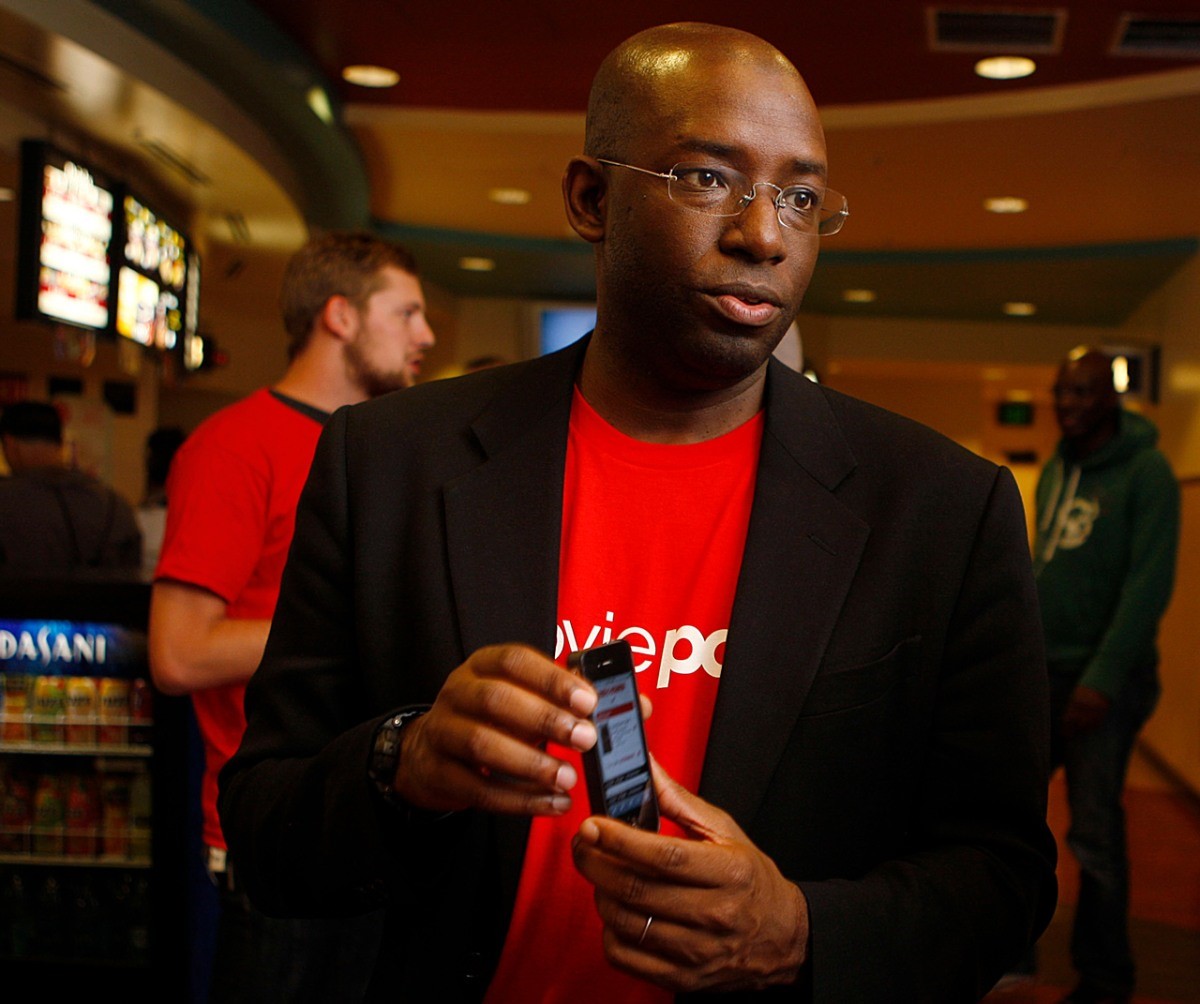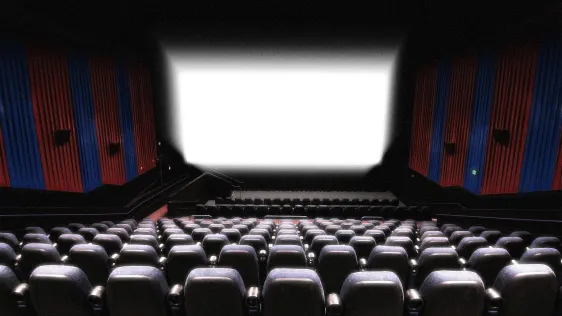MoviePass gets a second chance—and moviegoing does too
When the cinema subscription service MoviePass introduced its notorious $9.99 all-you-can-watch monthly plan in 2017, it was so popular that the company added 100,000 new subscribers within 48 hours and reached a million and a half by early 2018. That year, at its peak, MoviePass was valued at half a billion dollars. But its business model, of paying theaters full price for each movie a customer watched, was so unsustainable that MoviePass went bankrupt within two years. When its parent company, Helios and Matheson, put the assets up for auction in 2020, no one even ponied up the $250,000 listed as the minimum bid. Even the outmoded ticketing website Moviefone, also owned by Helios and Matheson and sold at the bankruptcy auction, fetched more than $1 million.
Ultimately, a buyer did emerge: MoviePass’s founder and original CEO, Stacy Spikes, who repurchased the company in November 2021, for $140,000, and relaunched it last May.
“I was able to get all of the data back, all of the patents, all of the trademarks,” says Spikes. For so little money, he explains, “Why wouldn’t you try it? Because we did succeed.”
The success he refers to is the version of MoviePass he oversaw from 2011 to 2017, before the company was acquired by Helios and Matheson. During that time, Spikes says that MoviePass was eventually able to “break even” by offering its product for $29.99 a month. In the growth-at-all-costs spirit that defined the 2010s, the new owners had fired Spikes and slashed the monthly fee of MoviePass by two-thirds, an approach that grew the customer base at the cost of the company’s solvency.

Even after MoviePass’s relaunch last year, the brand is inextricably tied in our collective memory to the brief window when cinema was nearly free. “People were going to 12 and 15 movies [a month] and they were paying a buck or less,” Spikes says. The $9.99-per-month offering “was never sustainable. It never made sense.” Even after the company crashed, he says, “there were not a lot of learnings from it because it was just like, there’s nothing to learn here.”
On this last point, Spikes is wrong. So is the Financial Times writer who opined that, “In the roll call of terrible business ideas, MoviePass ranks alongside the Sinclair C5, Juicero, and the Soup Tube.” While all these ideas might superficially seem like similarly overengineered imaginings of already functional products and services, there’s a reason why one of these products is remembered wistfully and the others risibly. MoviePass was actually on the right track. Whereas Juicero was a $400 machine that squeezed premixed juice bags, a useless product that no one wanted, the impossibly cheap version of MoviePass gave people something they craved and demonstrated that they love: going to the movies. If you drop the prices enough, people will sign up by the millions and quickly level your whole company.
The fact that people still enjoy going to movie theaters to see movies seems to require near seasonal restatement. “Every five years, journalists say the exhibition business is dying,” says Jason Squire, professor emeritus at the University of Southern California School of Cinematic Arts and host of The Movie Business Podcast. Cinema’s death rattle has been foretold by the dawn of home videos, then DVDs, then the rollout of Netflix’s streaming business, and most recently, the post-Covid habituation to a life confined to the home and an ever-swelling menu of cheap content.
Pessimists point to some obvious and glaring exhibits: Cineworld, parent company of theater chain Regal, filed for bankruptcy in September 2022; box-office revenues are still down by roughly a third compared to 2019; and AMC, the country’s largest theater chain, has become a cyberpunk conglomerate acquiring gold mines and catering to a financialized meme stock consumer base in order to grow.
Optimists, however, point to the fact that not only have 17 of the highest-grossing films of all time been released in the past two years, but in the wake of a total cinematic blackout during the COVID pandemic, only about 5% of screens (not theaters) have shuttered. And this is despite the fact that distributors have begun co-releasing movies on streaming platforms and theaters simultaneously, a decision that has benefited streaming services at the cost of angering directors and theater advocates alike.
At the same time, in between MoviePass’s bankruptcy and its relaunch, other theater subscription services have cropped up. Mubi, the streaming service for independent film, launched its Go tier in the U.S. in late 2021, allowing customers to see select films in local independent theaters as part of their regular monthly subscription; it added six more cities this year, including Chicago, Los Angeles, and Denver. Dine-in chain Alamo Drafthouse unveiled a subscription service in 2020. Meanwhile, cinema chains AMC, Regal, and Cinemark have adopted their own subscription models.
Importantly, these models have also had to implement guardrails that differentiate their business models from gyms, which, like a lot of subscription businesses, often rely on the laziness of their customers, explains Avner Strulov-Shlain, a professor of marketing at the University of Chicago Booth School of Business. Gym owners, he says, typically “follow the logic that we have our consumers, they’re going to be inattentive, or we’re going to make it very hard to cancel. And then, over time, we’re going to change our terms of service [to be less generous] or just hope they never notice that they’re still paying us.”
For gym-goers, the initial gusto to work out usually gives way to the realization that exercising is actually an unenjoyable act of self-punishment. “You have this basic psychology that causes you to potentially mis-predict how much you’re going to use the service,” says Strulov-Shlain. The gym is an example of a broader category that he refers to as investment goods, whose usefulness is solely a function of their ability to service some second-order objective. For example, time at the gym is an investment in health or appearance or the ability to sleep. People then either forget to cancel or refuse to do so in order to not admit defeat. And if you do want to cancel, well, forget it.
Movies, though, are not an investment good. Strulov-Shlain places movies within the bucket of leisure goods, things we do and consume because we want to, without regard for any future benefit, and sometimes in blatant disregard for their future costs. In this formulation, cake is a leisure good, salad is an investment. Ditto the Hermès bag versus the spare Trader Joe’s tote, and a night at the strip club versus the T-bill.
There are obvious caveats with this construct: its somewhat Puritanical construction of future rewards vs. future costs, laden with the implication that if we enjoy it, hell awaits, and the fact that there are many things we enjoy for their own sake that are hardly leisure, like gardening or taking care of a child.
But for argument’s sake, let’s put movie tickets in the leisure good category. Unlike gym-goers, those who gain enjoyment from going to movies aren’t likely to lose interest over time or avoid moviegoing. So the subscription business for an activity like moviegoing needs to adjust accordingly. It can raise the price. It can skimp on the quality of the product offered. It can recoup their losses elsewhere. Or it can strictly limit usage of the service.
Mubi Go, for example, limits customers to one preselected film at a specific theater per week, for $17.99 a month (which includes the streaming service, and can drop to about $10 a month if you try to cancel). Customers, who end up filling theaters’ surplus seats, are only offered a ticket if there are any left upon arriving at the theater. AMC also limits customers, but to a generous three movies a week for $20 to $25 per month. Regal (unlimited for $19 to $24 per month) and Alamo Drafthouse (one a day for $17 to $30 per month), on the other hand, go the recoup-losses-elsewhere route, reaping the proceeds from the increased sales of their own stratospherically priced concessions. And as Alicia Reese, an analyst at Wedbush Securities, says, all of the theater chains can harness their subscription programs to accumulate data and better target their marketing to customers, driving even more sales.
In the case of the newly relaunched MoviePass, customers are limited to buying tickets based on a somewhat complicated system of credits, in which different monthly subscription rates offer a different number of credits, which can be spent on movie tickets. At least in Chicago, where I experimented with it, the two movies advertised per month at the basic tier of $10 can only be achieved if you see two late-morning matinees. Alternatively, at least in my case, you could see one reasonably timed movie a month. This still provides savings, but at a lower ceiling. In other words, its new model relies on a combination of usage restriction or a compromised product. (Napoleon at 11:15 a.m.?)
Spikes claims that MoviePass is currently profitable, that the average customer saves about 30% on a ticket (which personally tracks), and that MoviePass has ambitions to incorporate AI and Web3 (sigh). Reese is skeptical. She wonders if the company isn’t simply repeating its original business plan of “giving you a dollar for paying 80 cents.” In other words, the newly relaunched MoviePass could be treading a lighter but ultimately similar path to the one that doomed it to begin with. (When asked how MoviePass is achieving profitability, Spikes says: “As with most subscription models, profit/loss is the delta between revenue minus COGS [cost of goods sold], and we are operating at a profit with our new model that allows us the ability to drive traffic where prices are preferable and display that difference to customers.”)
Surprisingly, it’s not the older moviegoers who are driving today’s interest in moviegoing. By some metrics, it’s the younger, digitally native audiences known for streaming YouTube shorts in their bedrooms who have evinced the greatest affinity for spending money at the cinema—Reese points out that the older end of Gen Z and younger millennials are the most likely to spend extra money to see movies on premium screens like IMAX, as well as purchase premium concessions. And that same demographic had also been the most on board with AMC’s odious plan to tier the price of tickets based on seat placement, a plan it scrapped after mass pushback from its customers.
Younger audiences were also the most likely to attend movies on National Cinema Day, when more than 3,000 theaters offered tickets on August 27 for no more than $4 as a sort of MoviePass-of-yore holiday that attracted about 8.5 million attendees. The Cinema Foundation, which organized the event, claims that viewers aged 18 to 24 and 25 to 34 were the largest demographics, each comprising 22% of attendees, with those in the 13 to 17 age group making up the next largest, at 16%.
“My daughter is 17, and she grew up watching things on [a computer],” says Spikes. “She saw a DVD once in storage and was like, what is this? But the idea of going to an event with her girlfriends is novel. You can’t replace a live event.”
(7)



